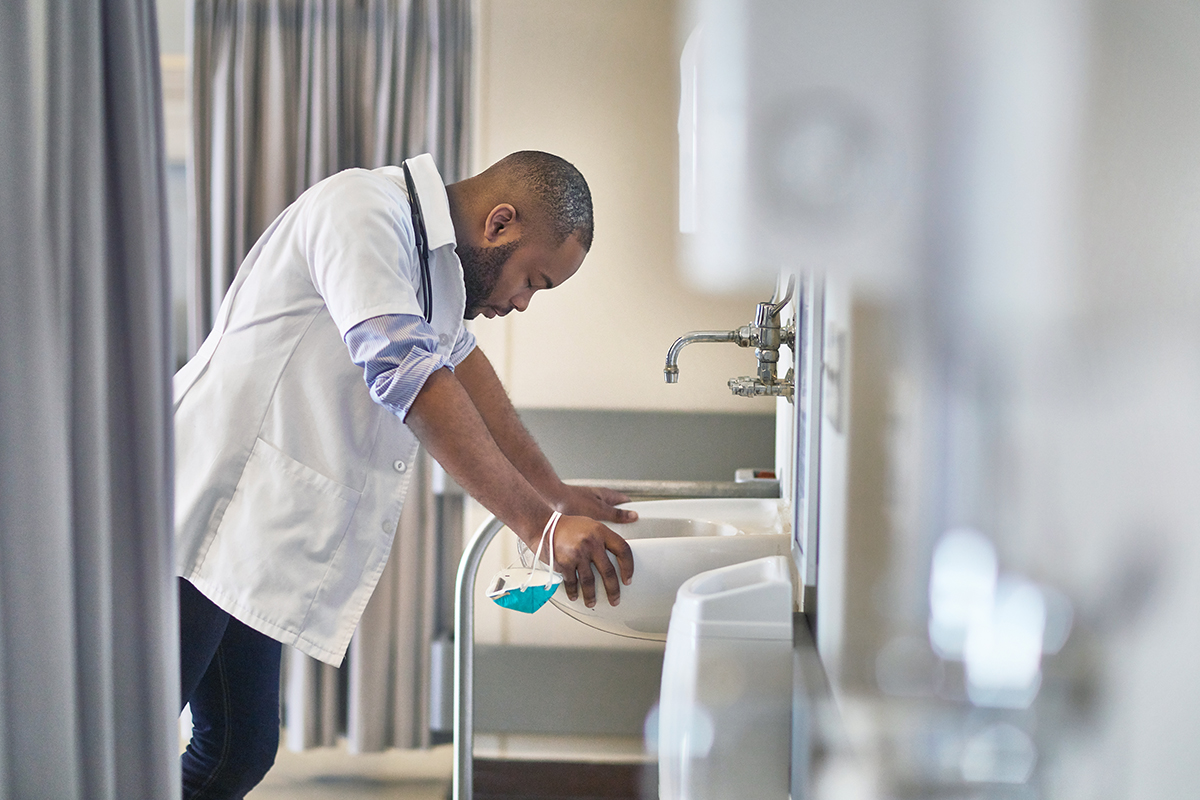With the difficulty faced with meeting high patient demands and managing mental stress amongst other factors, burnout takes a toll on physicians, practices, and patient. Focusing on the physical, emotional, and mental well-being of physicians and medical staff on the front-lines of the pandemic to make sure they do not burn out is crucial.
Here are 2 areas of focus that can help address physician stressors during COVID-19.
Maximizing Staff Capabilities
Optimizing Work Flow
 When facing the sudden onslaught of patients brought by COVID-19, optimizing the physician enterprise is one of many factors that can address physician burnout. To accomplish this, organizations would help physicians spend more time tending to patients rather than reporting by optimizing work flow, efficiently utilizing EHR documentation, and changing office layouts to fit their needs better (Modern Healthcare). Additionally, remaining flexible to include clinicians and staff in the decision making process as COVID-19 creates a flux of different scenarios to tackle would bring different perspectives to the table. This also makes them more likely to participate in new work procedures if their ideas were brought into consideration earlier on (Premier).
When facing the sudden onslaught of patients brought by COVID-19, optimizing the physician enterprise is one of many factors that can address physician burnout. To accomplish this, organizations would help physicians spend more time tending to patients rather than reporting by optimizing work flow, efficiently utilizing EHR documentation, and changing office layouts to fit their needs better (Modern Healthcare). Additionally, remaining flexible to include clinicians and staff in the decision making process as COVID-19 creates a flux of different scenarios to tackle would bring different perspectives to the table. This also makes them more likely to participate in new work procedures if their ideas were brought into consideration earlier on (Premier).
Provide Child Care
Due to the impact of COVID-19 shutting down schools, imposing quarantine on babysitters, and temporarily closing daycares, many of the staff are forced to stay home to watch their kids. In these instances, not only can providers look to contract with childcare services or set up a low cost daycare for their clinicians, they can also look for employees who are available to work the gaps that need to be filled (Premier). American Medical Association (AMA) has looked into several models that other organizations have implemented, such as St. Louis and Chicago medical students offering childcare and pet care for physicians and staff, as well as programs such as Mount Sinai that offers similar childcare services. Additionally, AMA reported one program that pays staff who have to stay at home regular pay if they also look after children of two other staff members.
Balancing Work for Physicians and Staff
Reduce Information Overload
Due to the fact that there is a huge influx of patients that need to be tended too, limit the amount of notifications (emails, calls, alerts) for those who are in direct patient care to prevent them from feeling overwhelmed. If possible, also minimize correspondences that happen when providers are away so that they, too, have time to disengage from work and de-stress (Premier).
Redistribute Workload
American Medical Association (AMA) suggested flexibility in job roles to optimize everyone’s time. If there are physicians or APPs who are at home for quarantine or childcare, they may take on managing emails and calls for others who are at work or, if possible, provide telehealth care. If there are staff who have not recently worked in the intensive care unit, retrain and/or enhance their skill to increase workforce (AMA).
Regulate Well Being
When times are stressful, it is easy for physicians to neglect their own needs in order to meet the needs of others. Make sure to help regulate consistent meal breaks as well as watch the number of hours physicians are working to ensure they are getting adequate amounts of sleep. Schedule consistent debriefs to check in and see if they need help balancing the workload to reduce risk of burnout (AMA). If an employee gets a COVID-19 related sickness, make sure their paid time off and sick days are not affected and their out-of-pocket expenses are covered as well (AMA). There are many additional resources to assist staff in monitoring emotional and mental well-being: apps to help track meditation and sleep or digital physician and care team “connection groups” that are actively supporting each other through COVID-10 (AMA).
During this time of world-wide health crisis, it is crucial to take care of those who are on the front lines, risking their own well-being every day to help others. By doing what we can to help ease the weight of the pandemic and remain compassionate to human needs, we can help physicians and nurses maintain their own health and wellbeing.